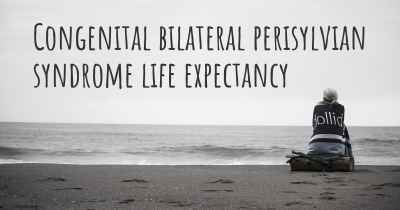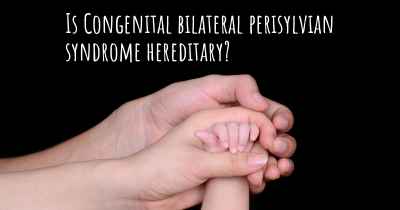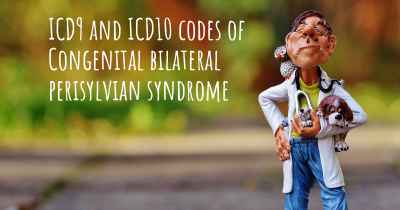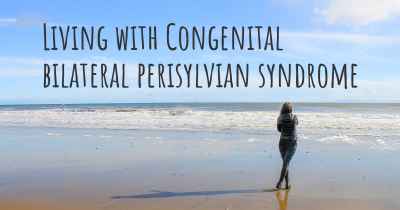How is Congenital bilateral perisylvian syndrome diagnosed?
See how Congenital bilateral perisylvian syndrome is diagnosed. Which specialists are essential to meet, what tests are needed and other useful information for the diagnosis of Congenital bilateral perisylvian syndrome
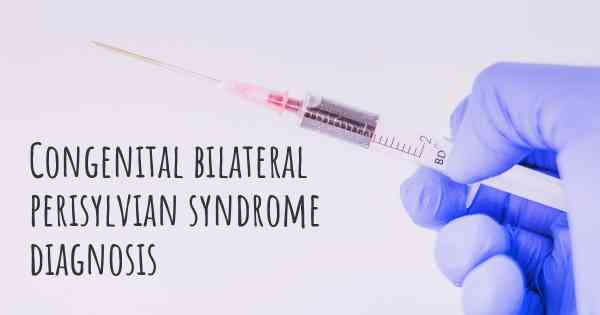
Diagnosis of Congenital Bilateral Perisylvian Syndrome
Congenital Bilateral Perisylvian Syndrome (CBPS) is a rare neurological disorder that affects the development of the brain. It is characterized by a range of symptoms including difficulties with speech and language, seizures, and motor impairments. Diagnosing CBPS can be challenging due to its rarity and the variability of symptoms among affected individuals. However, a comprehensive evaluation involving various medical professionals can help in reaching an accurate diagnosis.
Medical History and Physical Examination
The diagnostic process for CBPS typically begins with a detailed medical history and physical examination. The healthcare provider will inquire about the individual's developmental milestones, speech and language abilities, and any other symptoms or concerns. They will also perform a thorough physical examination to assess motor skills, muscle tone, and any physical abnormalities that may be present.
Neurological Assessment
A crucial step in diagnosing CBPS is a comprehensive neurological assessment. This involves evaluating the individual's brain function, including cognitive abilities, motor skills, and sensory processing. The healthcare provider will assess the individual's muscle strength, coordination, reflexes, and response to stimuli. They may also conduct tests to evaluate cognitive function, such as intelligence quotient (IQ) testing and neuropsychological assessments.
Speech and Language Evaluation
Given that CBPS primarily affects speech and language abilities, a thorough evaluation by a speech-language pathologist (SLP) is essential. The SLP will assess the individual's speech production, language comprehension, and communication skills. They may use standardized tests, observation, and interviews to gather information about the individual's communication abilities in different contexts. The SLP will also evaluate oral motor skills, such as swallowing and facial muscle control.
Neuroimaging Studies
Neuroimaging studies play a crucial role in diagnosing CBPS by providing detailed images of the brain's structure and function. Magnetic Resonance Imaging (MRI) is the most commonly used imaging technique for CBPS diagnosis. It can reveal structural abnormalities in the perisylvian region of the brain, which is typically affected in individuals with CBPS. MRI can also help rule out other potential causes of the symptoms.
Genetic Testing
Genetic testing may be recommended to identify any underlying genetic abnormalities associated with CBPS. While CBPS can occur sporadically, it can also be inherited in an autosomal dominant manner. Genetic testing can help identify specific gene mutations or chromosomal abnormalities that may be responsible for the condition. However, it is important to note that not all individuals with CBPS will have identifiable genetic abnormalities.
Electroencephalogram (EEG)
Since seizures are a common symptom of CBPS, an electroencephalogram (EEG) may be performed to evaluate the electrical activity of the brain. EEG involves placing electrodes on the scalp to record the brain's electrical signals. It can help identify abnormal brain wave patterns associated with seizures or other neurological abnormalities.
Consultation with Specialists
Due to the complex nature of CBPS, consultation with various specialists may be necessary to ensure a comprehensive evaluation. This may include neurologists, geneticists, developmental pediatricians, and other healthcare professionals with expertise in neurodevelopmental disorders. Collaboration among these specialists can help confirm the diagnosis and guide appropriate management strategies.
Summary
Diagnosing Congenital Bilateral Perisylvian Syndrome (CBPS) involves a multidisciplinary approach, including a detailed medical history, physical examination, neurological assessment, speech and language evaluation, neuroimaging studies, genetic testing, and EEG. Collaboration among healthcare professionals is crucial to accurately diagnose CBPS and develop an appropriate management plan. Early diagnosis and intervention can significantly improve the quality of life for individuals with CBPS and help address their specific needs.
Posted Aug 20, 2017 by Momof2miracles Jess Sundquist 4256
